Blog Tag: Mobile Application Development
7 Latest iOS App Development Trends You Should Know About

If you are a mobile software business owner and want to stay on top of the market competition, it is time for you to comply with the industry demands and create efficient and user-friendly apps. While Android app development can come across as a measure to capture a large share of the market, iOS app development is the most efficient way to monetize your application. So what should be your next step? Hire an iOS programmer! But before we discuss that, you must first understand the technology that goes behind iOS app development.
Which Technology is Used for App Development?
If you are a developer and are reading this, you must understand that as dynamic as the mobile software industry is – it demands technology that is quick-evolving too. Several technologies are used for iOS app development with the top six being XCode, AppCode, CodeRunner, Flutter, BuildFire, and AppiePie.
If you are a business owner and are looking to hire a freelance iOS developer, you know that you are looking for a candidate who is proficient in these technologies.
So what should you be looking for when you are hiring dedicated iOS app developers? Professionals who are aware of the following iOS App Development trends which are the future!
iOS App Development Trends That Are the Future!
Machine Learning and Artificial Intelligence
Machine Learning and Artificial Intelligence are the future. They are now a part of our daily lives more than ever! If you are looking to hire a dedicated iOS app developer for your business, your candidate should be aware of trends such as speech recognition, renewed algorithms of Siri, accurate analysis of online behavior of the user, optimizing search processes, and integrating them into the app.
-
Internet of Things
From logistics to the agriculture sector, IoT has revolutionized the lives of internet users. For iOS app developers, it is critical to integrate IoT as there are already applications that can help in identifying heart diseases, facilitate remote control of home theatres and even water supply in homes, and control farms and plantings directly from a tablet or phone. The future is of those who can top these inventions and use IoT to deliver new-generation conveniences.
-
Augment Reality and the ARKit
Snapchat and Pokemon Go are apps that have made the augmented reality even more desirable. Apple offers the ARKit 3 that offers augmented reality experiences to its users. These apps consume a lot of energy and hence are compatible only with the latest devices by Apple. Going forward, it is expected that apps that offer apps that expand the capabilities of the device, provide the improved illusion, and facilitate sharing of experience will be in demand. This is a trend that new-age developers need to be aware of and be ready in terms of skills. If you are looking to hire dedicated iOS developers, this is a factor that you should bear in mind.
- ApplePay
For the iOS platform, the Apple Pay trend is something that iOS developers will have to be mindful of. Currently, the strengths of this technology include the freedom of usage anywhere, high security, and 24/7 availability even when the user is not carrying their card with them. If you are hiring a freelance iOS App Developer, look for an enterprising individual who can create or improvise on the ApplePay trend.
- Cloud Integrated iOS Apps
Apple introduced iCloud in 2011 and there have been multiple upgrades to it since then which have improved its utility and functionality. In the future, app developers have to look at upgrades that allow cheaper development that brings about a price drop. Furthermore, scalability and safety upgrades are features that are expected out of Apple’s Cloud Integration trend.
-
iBeacon
iBeacon is a new trend in mobile application development that is changing the game in the marketing space. This iBeacon app is expected to bring out a revolution in sales strategies and is especially beneficial for the art sector.
-
ChatBot
Chatbots are not a new application but their functionality is evolving with time. The expected outcomes from the ChatBot trend is that it will increase throughput by expanding reach among customers, self-service for customers, and providing 24/7 availability.
Wondering where you can find skilled and enterprising iOS app developers? Reach out to Tops Infosolutions today!
Hire the Best iOS Developers Online!
TOPSInfosolutions offers you expert and experienced iOS developers who are equipped with the latest tools and techniques to address specific business requirements. To know more about hiring an iOS programmer online, you can reach out to us by writing to contact@topsinfosolutions.com or calling us at +1 408 400 3737 or +91 7575 000 269.
How Can Mobile App Deep Linking Benefit Your Mobile App Development?

The Mobile App ecosystem is a vast and extending network filled with different apps for all needs. Numerous apps are being developed and published on the app store and play store every day.
However, only a few get to the top position based on how useful and easy functionality could be. Mobile app development is an easy task only when each step of the development cycle is analyzed and appropriately framed to be successful.
Every minute step is essential for Mobile app development, and cutting corners may significantly impact the final product sustainability. Here, we’ll see the importance of mobile app deep linking and the essential steps that are not missed during app development.
Mobile App Deep Linking is a URI, uniform resource identifier. It connects to a particular page or the locations inside a mobile application. The primary purpose of deep linking is to offer related information requested to the user through e-mail, push notifications, social media, SMS, etc.
It fundamentally improves the user retention ratio and drives user engagement. In the absence of deep links, URLs will direct the users to the home screen alone and not to the particular content. It will leave the user hanging on the irrelevant page and eventually make them lose interest or rebound.
But, Deep linking has altered mobile apps’ interaction aspect and effortlessly bridges the gap between apps and websites.
Mobile App Deep Linking Models
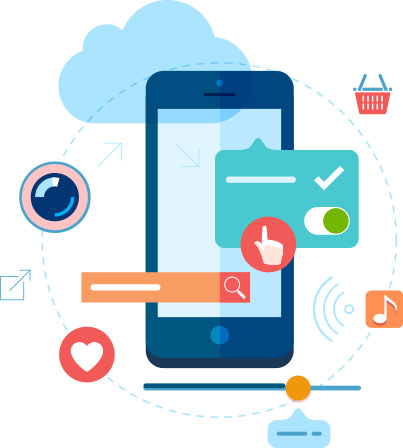
- Traditional deep linking: Directs users to a particular screen in your mobile app by utilizing your app’s URL. It works only when your app is installed on your mobile device; else, it will throw an error page.
- Deferred deep linking: No app installation is needed on the user’s phone. The user clicks the link, and it directs them to the app store, prompting them to download it. Once the download is completed, the user can view the content intended.
- Contextual deep linking: The user is directed to the specific content location. It even stores contextual information such as the link shared by whom, the source from where it’s shared, the location where the users wish to navigate, etc. This data offers a personalized experience to the users by giving them appropriate content, depending on their preferences.
Benefits of Mobile App Deep Linking

- Drives Re-engagement – Scenarios where the users have installed the app but remain inactive for a long time, can be rectified by push notifications. Special deals or relevant content can be promoted to regain the customers’ interest and even turn them into active users.
- Improves App Discoverability – In instances where your website is reeling in visitors, but your mobile app isn’t, then deep linking is the go-to option. You can go for a mobile app with deep linking installed, particularly for searches. It will enable your app to be displayed on the Google search page, thereby making it easier for users to find your app.
- Increases App Downloads – With mobile app deep links, the content gets displayed on the search result page like your website. This link will direct users to install your app, drive more installations for your mobile app, and engage users in the existing platform.
- Link Two Apps – deep linking makes it easy to set up a connection between two apps. If two or more e-commerce apps with various products, the user can be directed to your other app or vice-versa once they are done with what the current app has t offer. Linking apps help to increase the customer base, and revenue generation and also aid in cross-selling products.
- Convenient Content Promotion – Deep links help to build links on the websites, social media platforms, and emails to direct to specific content in the mobile app. It helps in promotion by linking back to your deal or new launches that you wish your customers to see. So, instead of asking users to log in to your app, you can directly link them to your promotional content.
Some of the top brands that harness the power of deep linking are Zomato, Google maps, Ola, Uber, and many more. There are other important tasks involved while creating a mobile application that should not be neglected during the mobile app development process.
1. Market Research
The necessary groundwork for mobile app development is crucial. Research should be done about the target market, competitor analysis, and target audience before commencing the development process. Analyzing whether your idea fits well for the users in the current market trends needs to be determined.
If it is an already existing idea, your unique things must be given much attention to attract consistent active users. Also, define your budget and perform a detailed survey in the beginning stages to smooth the development process.
2. Wire Framing
Preparing a detailed scope of the work, developing a wireframe of your app, and drawing detailed sketches of the product are necessary. It can help check the usability issues
and make sure that the mobile app development process meets your requirements. It can be useful to take feedback from industry experts and rectify any loopholes at this stage so that changes can be incorporated easily.
3. Technical Feasibility Assessment
Checking whether the backend systems support the app functionality is important by accessing public APIs. Moreover, based on different platforms like iOS, Android, etc. there may be varied requirements. So, the technical limitations need to be analyzed during a technical feasibility assessment.
4. UI/UX
Delivering a great user experience is what all boils down to grabbing user attention. Varieties of layout design, navigation buttons, colors, graphics, fonts, styling, and other visual elements can be tried and tested.
It should be aesthetically pleasing and must include functionality, design concepts, timeline, budget, etc., for creating an engaging user interface. To have a first-hand picture of your app, it is best to develop static mockups.
5. App Development Testing
Testing the app for bugs, and incorporating features that are necessary and compatible with powerful smartphones is essential. The app is tested for compatibility, usability, interface checks, stress, security, and performance to ensure that users are happy with the interface.
6. Deployment & Maintenance
Here is where your app gets launched! App store standards and security requirements must be met to publish the app. After release on the App stores, regular updates and maintenance must be done.
Conclusion
Mobile app deep linking is beneficial in revenue generation and offers a superior user experience. When done correctly, it can increase the profitability of your mobile app.
For mobile app development services and custom app development, reach us for more information.
Ways AI can revolutionize the Mobile App Development

AI or Artificial Intelligence offers machines the ability to do what living beings can do. It includes the machines to self-train, and learn new things like humans – seeing, listening, conversing, and studying others. Today’s smartphones and tablets have more sensors compared to other computing devices. Although they can sense temperature changes, ground leveling, and even calculate the device’s real-time speed, it is not enough for AI.
AI capabilities require humongous processing power to execute Natural language understanding (NLU) or intelligent routing in the content delivery system. That is why these battery-operated devices are connected to the internet and cloud computing all the time.
AI in Mobile App Development and NLU
A mobile app is an accumulation of services from multiple third-party API service providers within a native software package, which helps fetch relevant data based on a user’s requests. Likewise, AI capabilities can be added, especially the Natural language understanding (NLU) feature. For Android and iOS mobile devices, Google Actions and SiriKit integrations are predominant. It can bring many AI capabilities into our daily apps, whether it is food or ride.
Delivering Personalized Experience with AI
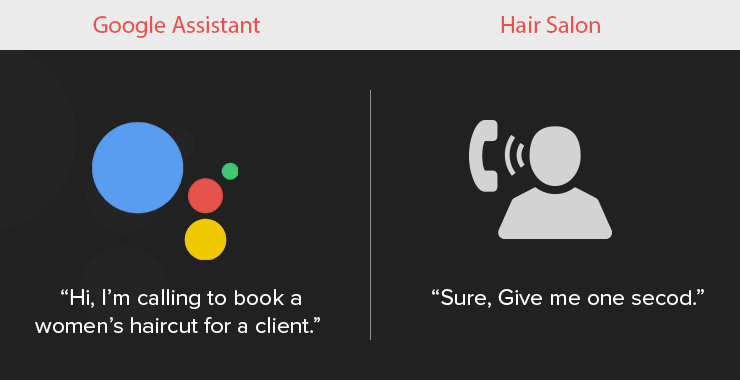
A user’s intent is expressed in two ways: text and speech. Apart from the direct instructions, your routine behavior can be studied ad prompted. Say, you order lunch at a particular time. AI program can self-train and predicting your behavior at the stipulated time. The OS suggests various apps at multiple points of time. Besides suggesting, what if your smartphone notifies on discounts at your regular restaurant or other restaurants serving the food of your choice plus various offers? This extra step is offering a personalized experience to the user.
It is the personal experience that we expect from the apps we use.
Significant Benefits of Mobile App Development with AI

All businesses are thriving on Innovation. It helps the businesses to leverage the added advantage in going for mobile app development for its customers. Some famous brands like Zara, Domino’s Pizza, and Starbucks have proved that mobile app development can boost sales significantly. Let’s see what it has to offer.
-
Inculcates Brand Loyalty
To retain customers, businesses need a compelling mobile app presence. As more potential customers are in the mobile space than PC, unique mobile app developments can alone target brands to its customers. By leveraging AI, brands can set a solid foundation for their customer base.
-
Forms Brand Recognition
Winning the trust of your target audience can only drive customers to commit to your brand. Mobile app development will offer the opportunity to show your users why they should trust in your brand. User-friendly mobile app development with AI intuitive features can make the customers get involved with your app. It also helps to recall your business.
-
Link with on-the-go customers
People are always on the go; work, gym, café, you name it. Their easy access during such times is their smartphones. Nowadays, most people mobile active, and this provides a great opportunity if your brand has a mobile presence—a chance to convert your mobile app visitors into loyal customers irrespective of the location.
-
Craft Personalized content
Mobile apps can establish an emotional bond between the business and its customers through personalization. Studying customer persona, behavior, preferences, and such, you can give personalized content and show that you care. AI plays a vital role, and with tailored content, your chances to meet the specific requirements of the audience and turn them into frequent users are highly possible.
-
Boosts Gains
An increase in customer satisfaction increases sales. The happy your customers are, the more are the chances of visitors and visits to your app and make a purchase. It results in severe returns if you unveil a mobile app in addition to your website.
AI is altering the way we connect with apps. The AI engine is capable of delivering the entire flow from action to fulfillment based on the user’s ‘intent.’ It will communicate with the apps, servers, payment gateways, etc. In this current COVID-19 scenario, mobile apps with AI technology are monitoring vital health statistics to determine any ailment in its initial phase and avoid complications. Well, the future holds so much more.
For AI mobile application development services – Request for call back or a free quote
How to Choose a Mobile App Development Company? – A Comprehensive Guide
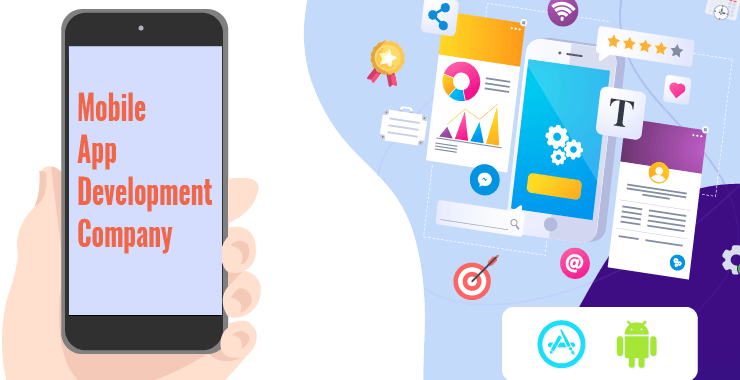
Choosing an outsourcing partner for your next mobile app is everything but easy. First, there is endless number of mobile application development companies out there. Try to Google, ‘mobile app development company’ and you’ll understand what I mean here. Apparently, Google is the best place to look for an app development company.
With so many companies showing up in Google search results, it’s easy to get lost. However, don’t lose your hope already. There are some neat tricks and after a little scrutinizing to the parameters, which I am going to present by means of this blog, you’re going to run out of quality mobile app firms to choose from.
Preps
One of the major problems with firms looking to outsource mobile app development is this that they start searching and approaching firms without gaining any intelligence into the market or perfecting their app idea. This anomaly makes them an easy target of fraudulent app developers that disappear somewhere upon the receipt of payment.
Gathering intelligence
You’re not the only firm looking for an app development company. There are many on the same trail. The only difference is this that many of them are not doing this for the first time. With mobile development getting larger every day, every firm wants to make money out of it. No doubt, there are so many companies out there, confusing the hell out of you.

When you approach a company over a cold online search, it expects you would have done some sort of research. When it realizes you did not, they are going to either over-quote you or won’t take you seriously.
I would recommend going through a few YouTube videos and a number of blogs to get a basic understanding of mobile app development before running the hunt.. While the pricing varies greatly from firm to firm and geographies, you should get a fair estimation how many hours it will take to bring the app to the market.
In addition, you can meet some local mobile development companies in your area to gather intelligence.
Shortlisting the firms
As I said, the internet isn’t short of companies that stuff “mobile app development company” in their webpages. However, not every company that stuffs the keyword to manipulate Google search algorithm in its favor develops mobile apps. So are mere vectors to actual companies. Beware! these agents disappear as soon as they get their commission.
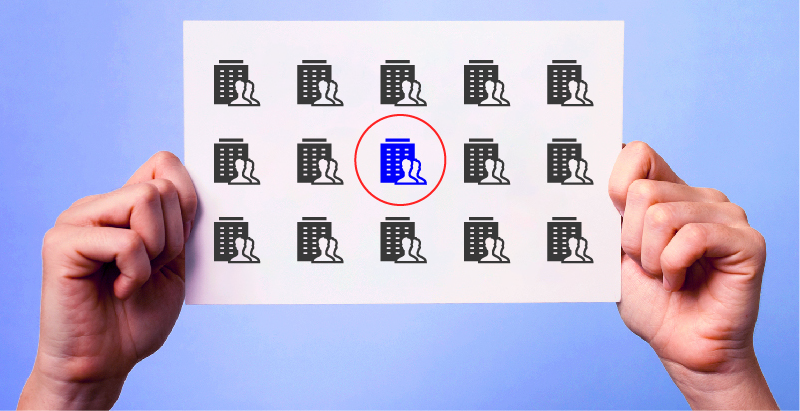
Nevertheless, it’s not hard to tell an agent from an actual development company that specializes in mobile app development.
Tip: Remember, a website shows only the best of a company. If you want to learn the truth, look elsewhere.
When you look for an app development company in Texas, you will encounter three types of websites: development companies in Texas or operating in Texas, a website that lists such companies, for example, Clutch and GoodFirms, and education websites teaching you how to develop an app.
Is outsourcing abroad safe?
While outsourcing development to a firm in the states is a much safer option, a mobile development company easily charges anywhere $100-$150 per hour in the US, which isn’t affordable unless you’re fine spending upwards of $50000 in mobile development alone. On other extreme are mobile developers in Bangladesh and the Philippines that are ready to work for less than $10 per hour. If you are looking for a balance between cost and quality, you can pick East Europe and India.

I personally prefer India as developers there are much more fluent in English than developers in Europe. Also, it’s easier to find a development company in India that is ready to work for less than $40/hour.
Check Portfolio then Crosscheck
Most of the development companies demonstrate their portfolio on their websites. If a certain website you shortlisted do not, it’s ok to ask for it. Most websites have a contact us page to contact the administrator.
Once you have hands-on the portfolio, try to contact the companies whose portfolio has been shared with you. It’s easy to find their contact info as long as their websites have a contact us page. Don’t be shocked if you find a few companies that fail to recognize the developers. In the mobile development market, ‘fake till you make it’ is a common mantra.
I’ll suggest you drop such developers already and go with only those developers whose portfolio you could validate. Credible mobile development companies won’t hesitate from sharing the info about the client they worked with unless an NDA is involved.
Raise an inquiry
It’s time to contact the shortlisted development companies. At this stage, you do not have to share any info about your idea or the app. Just let them know that you’re interested to work with them on an app. Most of them, will contact you back within a couple of days to gather ideas and details for the app you are looking to develop.
Commonly, development firms expect the interested parties to share their contact information on their website from the contact us page. A few firms also offer you free estimation or consultation on request.
A word of caution!
Do not share any details of the app or your ingenious app idea unless the development company has signed a Non-Disclosure Agreement (NDA) with you. Once they have signed the document, they are under legal obligation not to disclose any info about the app to anyone. NDA will give you creative and technical freedom to share your thoughts with all the shortlisted companies.
Passing the info is important for development companies to understand the scope of your work and translate into the number of man-hours required and, ultimately, cost.
Negotiate the cost
Once the shortlist is ready, try to negotiate the cost for the number of features available. Most of the development firms are more flexible with pricing if you commit them long term development plan or give a handful of references. You will be negotiating with more than one firm at a time so keep a tab of the price you last negotiated with a firm.

You can make the final decision once you have all of their prices. It’s apparent to go with the lowest price but there are more factors to consider. A major one is a features-to-cost ratio—the greater the ratio the better the deal you’re getting.
Remote Team
You will be working with a virtual team sitting somewhere on the globe. Most firms let you interview and select the members of the cloud team. Remember, you’re going to pay them hourly. So this may occur to you: you don’t need the most efficient person who can deliver the maximum in minimum time. A senior developer will help you make most of the hours you’re going to pay for. However, they are costlier.

A balanced team is consists of a couple of senior developers and 5-10 junior developers working under the command of a supervisor. Selecting candidates for your team is a one-time process. Most companies to cut down chaos allot you a single point of contact, mostly a team leader or a project manager, depending upon the size of the project.
In case you find the developers not up for the job, it is better to look elsewhere probably for a higher cost.
Go Agile
This goes without saying but most new companies looking to develop a mobile app rush through their apps development cycle and try to stuff more features that it can take. This rush leads to the development of an app with half-baked features and too high a cost.
The biggest benefit of going agile is that new features are added gradually. So you have more time to test the features of an MVP. In addition, the developer will bill you for only the features he added, which will help you keep costs in check.
Hire TOPS Infosolutions
If you are looking for a mobile app development company that works with a global clientele and has presence in various countries, there is no better app development company but TOPS Infosolutions.
Frequently Asked Questions
Do you practice the Agile App Development Process?
Indeed we do. The most significant advantage of going agile is that you can add new features progressively. So, this gives more time to test the features of an MVP. Additionally, we will bill you only for the added features, which will significantly keep the costs in check.
How secure is my app during the development process and post that?
We follow strict ethics when it comes to confidentiality. We encourage our clients to sign a Non-disclosure agreement (NDA) which entitles us to be under legal obligation not to disclose any app-related information to anyone. So, you need not worry about it.
Will You Maintain My App Post-Launch?
We support maintaining your app post-release. Our developers at Tops are available around the clock to offer maintenance assistance.
What will be the cost involved to develop an app?
The cost varies according to the various features and aspects that your application demands. The timeline and workforce allocated also play a significant role in determining the cost. To know exactly how much it would cost for development, drop us your requirement, and our experts will get back within 24 hours with a free quote.
Apple Ditches Home Button and Adds Notch to All New iPhones
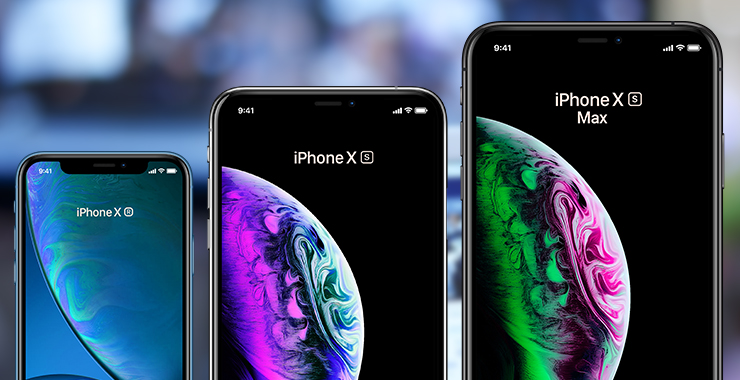
After so many leaks, predictions and speculations, Apple has launched the next generation of iPhones. Like the last year’s event, this year too three iPhones were announced at the recently concluded Apple event: iPhone XS, iPhone XS Max, and, cheaper, iPhone XR. Last year’s iPhone X has received tons of updates. Its successor comes in two sizes: iPhone XS (pronounced “ten S”) and iPhone XS Max.
iPhone XS Max is a larger avatar and features a bigger battery and screen than iPhone XR, which among many upgrades sport the next gen Apple SoC, A12 Bionic. A12 Bionic SoC, in fact, is standard across all the iPhone announced in 2018, including the entry-level iPhone XR.
Apple A12 Bionic
Apple A12 Bionic processor features 6 cores in big.LITTLE configuration wherein 2 high performance cores are up to 15% faster while remaining 4 efficiency cores consume up to 50% less power than A11 Bionic of iPhone X.

The current generation of Apple SoC boasts a GPU with four cores and lossless memory compression. The GPU delivers up to 50% performance gain over A11 Bionic in terms of graphics power.
Say ‘Goodbye’ to bezels and ‘Hi’ to notch
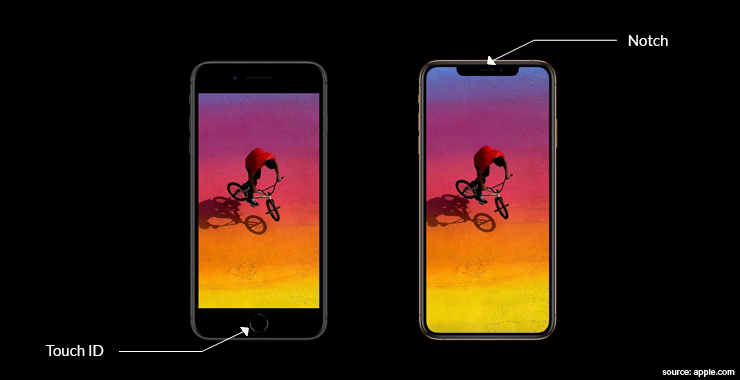
With iPhone XR, Apple has ditched bezels and embraced ‘notch’ altogether. While last year’s iPhone X did have bezel less and ‘notch’ design, the entry-level iPhone 8 and iPhone 8 Plus, had profound bezels and notch absent. Not to mention, those two were the last iPhones to have a home button. Apple has ditched the Home button and Touch ID in favor of Face ID and the TrueDepth camera respectively in all iPhones.
The new ‘entry-level’ iPhone: iPhone XR
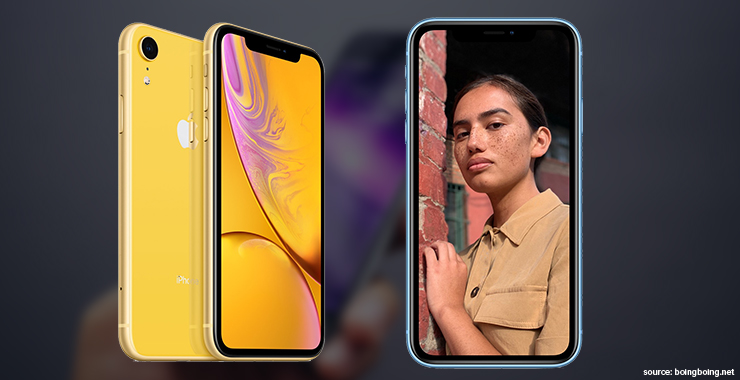
iPhone XR, in addition to using the same processor as the iPhone XS and iPhone XS Max, supports Face ID and has TrueDepth camera. The major difference between ‘XS’ and, cheaper, ‘XR’ is the display technology. The cheaper variant features a LCD display, which Apple calls “Liquid LCD”. iPhone XS and XS Max, on the other hand, have a more vivid “Super Retina” OLED display. Unfortunately, iPhone XR only uses a single rear camera like the iPhone 8. Seems like Apple likes to reserve more premium features like dual-camera system, wireless charging and OLED display for its more premium phone offerings namely, iPhone XS and XS Max.
SmartHDR, Portrait Mode, and OIS
All the three iPhones support Smart HDR, optical image stabilization and portrait mode despite iPhone XR missing a dual-camera system. SmartHDR is courtesy of A12 Bionic and automatically makes improvements to photos using machine learning.

Apple, expectedly, has insisted on 12MP rear camera setup this year too. XS and XS Max have two of those 12MP cameras in f1.8 and f2.4 setup respectively while XR has only one in f1.8 setup.
Apple has made last year’s TrueDepth camera standard across all its iPhone models. That is, the same 7MP camera is present on all the three announced iPhones.
Conclusion
Although subtle, Apple brings some noteworthy features with the new line of iPhones. All three new models have got rid of the home button to make room for more screen. The bezel-less screen, indeed, looks overwhelming from every angle. Not to mention, Apple has the most sophisticated facial-recognition technology to unlock its device thanks to the industry-best TrueDepth camera, which is now, fortunately, standard across all the 2018 iPhones. I would like give a clear thumbs-up to Apple for that.
Apple iPhones may be getting more expensive every year. But with the amount of additions and efforts it is putting on them, iPhone are still worth every penny and I don’t think that is changing anytime soon.
Can’t wait to get your hands on the new iPhone? We have a good news for you.
iOS App Development with TOPS
There is even a better news if you’re an app developer, publisher, or someone looking to develop an app for the new iPhones. At TOPS, a leading mobile app development company, we have an enormous experience in developing leading edge applications for iPhones, iPads, and Apple Watch. An expert team of iOS developers, persistently works around delivering one quality iOS app after another and they are ready for the new iPhones too.
How to Determine the Target Audience of Your Mobile App
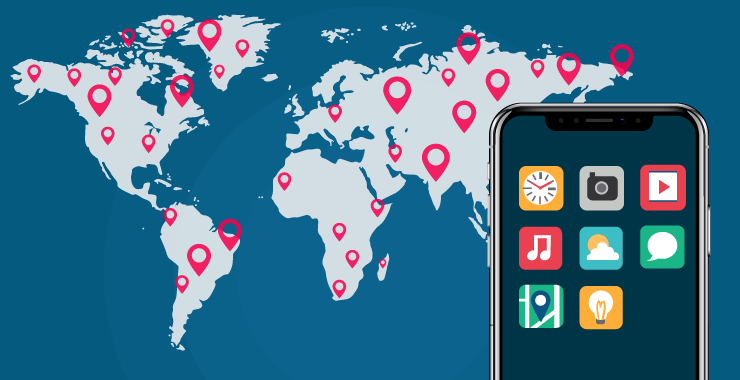
One of the biggest mistakes made in app development world is putting the technical details first and neglecting the target customer base. Coming up with a unique idea is just not enough to climb the ladder of success; you will have to create an app that delivers value for the target group of people. It is crucial to define target market so that you can know whether they will use the app and can even identify if there’s a demand for the type of mobile app developing.
By figuring out the target audience for your app, you can:-
- Develop features as the per user preferences
- Plan strategies for the marketing campaign
- Use the best monetization techniques
But, how would you identify the right target audience for your mobile app? Let’s dive-in deep to know more…
General Understanding
Knowing target audience is the first step of mobile app development process. For instance, if you are planning to develop a food delivery mobile app in New York, one can assume that your target audience will be the one who is living in New York. In –case, if you are unable to decide on who is your end-customer, you need to work on your app concept to come up with the refined target audience.
Secondary Research
Secondary research includes in-depth analysis of the industry, competitors and actual customers. For instance, food delivery app, it would be boon for the people who are busy working late-nights or get back home late. You can even focus on how often people order from your app, what are the common items they generally buy, which factor is driving them to buy – new products, discounts, reviews etc. and you must keep an eye intact on competitor’s audience.
Understand buyer’s demography, behavior and lifestyle
You need to know the nitty-gritty of your ideal customers! The more granular you can get with the information, the better you can know the buyer’s persona. Look at the traits such as:
- Demographics: This information can include gender, age, location and culture. This becomes very important if you are looking to develop food app, travel app, restaurant app or lifestyle app. The demographic information will help in determining the specific group of audience who will be interested in using your mobile app
- Psychographics: This information goes beyond demographics and identifies more about customer’s psychology, interests, values, attitudes, behaviors and much more. The psychographic information will help you to know the reason for using your mobile app
- Technographic Segmentation: This information is related to the devices! The number of customers engaging with your product via mobile device, type of device – smart-phone, feature phone, tablet, brand, version, model and other technical attributes. The technographic information will help you to learn where to reach your different audience and on what device.
The above-mentioned information is essential in basic profiling of your customer…
Conduct surveys
You can conduct surveys by directly interacting with the target audience and asking about their preferences. However, there are different ways of conducting the survey.
- Combining survey and interactive prototype where an interactive prototype is created to draw traffic to your app and survey is done to know the likes and dislikes of the customers
- Combining mobile MVP with the actual feedback; Opt for this, if you have gathered information about your target audience. You can develop an app with sufficient features and gather feedback from various groups and communities.
Use marketing strategies
- Focus on the groups to know what users look for
- Take up social media platforms to promote your app idea just to know what audience think about your product
By using effective marketing strategies, you can gather deep insights about your app’s target audience.
Research competitor’s app
Apart from figuring out the behavior of the customer, closely monitoring competitor’s app will help you to know what they are doing right and their weaknesses. Check out features and designs that are missing in your app and peep through the review to know what people are saying. Make a note of positive and negative reviews; check out what users say about the app speed and performance. With all this insights, you can develop an app which is more in line with the preferences of your target audience.
Wrapping it up…
Now, you may have clear idea for whom you’re developing your app for, what are the opportunities and how your app can fill the gap and gain popularity on app stores. Doing thorough research and developing effective strategies can help to know your potential customers and can aid in getting ahead of the competition.
Would you like to know more about how to define the right target audience for your app to open up countless opportunities? Connect with our experts to know how TOPS Infosolutions can help to get you an edge over your competitors.
Mobile App Development Process – Steps to Create Successful Mobile Application
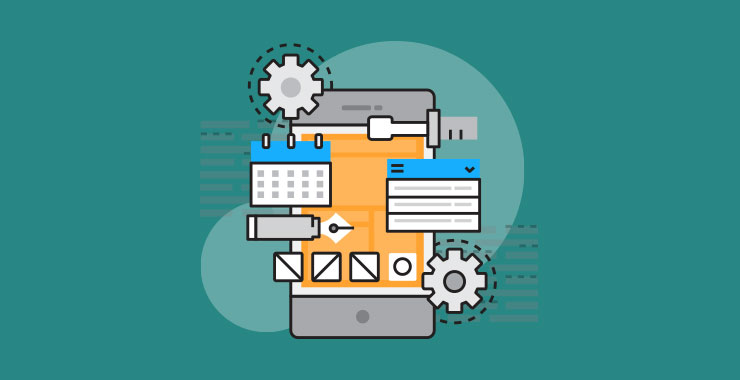
In 2022, nearly 258.2 billion smart-phone applications will be downloaded and the worldwide revenue generated by the mobile app industry is also expected to witness huge jump – from an already impressive $45 billion in 2016 to a staggering $80.6 billion by 2020.
Mobile app ecosystem is crowded with the apps for all needs; each day, thousands of apps are getting developed and published on app store and play store, but only few app gets to the top position. Although, developing a useful mobile app is easier but developing an app by considering each step of the development cycle is something that can give you success. When it comes to mobile app development, every step is important; cutting the corners may affect the sustainability of the final product.
Below-mentioned steps will help you to focus on each task, while not missing the key aspects of mobile app development process.
Step 1: Market Research
When you think of developing an app, it is important to do the basic groundwork for the app. You should research about the target market, target audience, competitor analysis before beginning the development process. You may think that your idea is great, but sometimes it just doesn’t fit in the current market trends. If your idea already exists, research on what unique things you can add to attract user’s attention. Behind every thought in developing an app, keep the end user in mind and do extensive research on the following question…
- What problem your app will solve?
- Will this feature benefit the user?
- What you want your app to do
Define your budget and do the detailed survey in the early stages for the smoother development process.
Step 2: Wire Framing
Once you are done with the thorough market research, the next phase of developing a mobile app is preparing the detailed scope of the work. Develop a wireframe of your app and draw detailed sketches of the envisioned product that can help you to check usability issues. Wire framing includes details on the platform, features, feasibility and specifications and ensures that mobile app development process is in sync with your requirements. Take the feedback from the industry experts and figure out the loopholes because at this stage changes can be easily incorporated. Now, you will have a clear understanding of how your ideas will combine together into a functional app.
Step 3: Technical Feasibility Assessment
Having a visual understanding of the app is just not enough, you need to check out whether the backend systems will support the app functionality or not. To know it, you need to get access to the public data by sourcing public APIs. Moreover, an app will have different requirements depending on the platform like iOS, Android etc and the device like smart phone, tablet, wearables etc. You may need to alter the wireframe if there are any technical limitations during technical feasibility assessment.
Step 4: Design
To make your app look great, you need to know the features and outcomes to deliver great user experience. You can create multiple variations of a screen by playing around with the layout, navigation buttons, graphics, colors, styling, fonts and other visual elements. Your goal must be to develop aesthetically pleasing app enough to attract the target audience. The team must consider all the parameters necessary including functionality, design concepts, budget, timeline etc. to create engaging user interface. Developing static mockups will provide you a clear idea of how your app will look like and how the user will navigate through the app.
Step 5: App Development
As the development progresses, the app passes through couple of phases:
- Alpha phase: In this phase, only the core functionality of the app is presented which is error-prone and not tested
- Beta phase: In this phase, the app is lightly tested and bugs are solved and most of the proposed functionality is integrated
Agile and Scrum development approach is preferable as it provides collaboration, transparency and rapid iteration benefits which can adapt to the changes easily. During this stage, it is vital to consider multiple factors like multitasking, form factor, device and OS fragmentation. It’s of no use to incorporate the features that are not compatible with the majority of the smart phones.
Step 6: Testing
After developing the app, it is crucial to test the app to find out the bugs in the application. This is all about putting the plan into action and coming up with the first iteration of your developed app. The app is tested for usability, compatibility, security, interface checks, stress and performance to ensure it is bug-free and that users are comfortable with the interface. In User Acceptance Testing (UAT), you would get a clear idea whether your mobile app worked for the intended users or not. If the feedback calls for the major changes, you need to repeat the process right from the wire framing till the app becomes bug free.
Step 7: Deployment & Maintenance
Finally, your app is developed, tested and ready to launch! Understand the norms of publishing the app on App stores. App stores have specific quality standards and security requirements for publishing an app. For different categories the policies of submitting an app are different.
The release of the app on the App stores is not the end. The app required regular updates and there’s always room for improvements and enhancements. Working regularly with your development team, you’ll be able to keep your app up-to-date and maintain its relevancy with the changing times.
Conclusion
Every app is different from another in one or the other way. But the step involved in mobile app development process remains consistent as mentioned above. To make your app successful, you need to follow each step carefully. The process of mobile app development is never ending process; you need to update your app and launch a newer version as and when the trend changes. When users start using your app, you will get reviews about how much satisfied/unsatisfied your customers are. Seeing their feedback, you need to incorporate features in the next versions of the app.
Looking for an experienced mobile app development company who can create your app from scratch or help you in one or more of these steps? We’re just a click away.
Importance of APIs in Mobile App Development
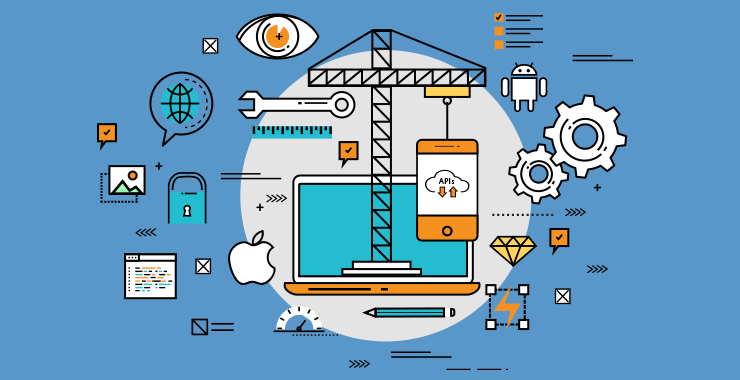
You might have come across the term ‘API’ while discussing mobile or web application development. In layman terms, APIs are the language through which applications speak to each other.
Today, APIs serve as a foundation in the app development process and allow companies to grow their businesses by using services provided by external firms.
What is an API?
API is an acronym for “application program interface.” It is a set of routines and protocols that enables access to another party’s application or platform.
An API is a software-to-software interface, through which the applications talk to each other without any user knowledge or intervention.
Let me explain you with an example: When you buy tickets through a movie ticket booking application on your smart phone, the application uses an API to send your credit card data to a 3rd party application for verification.
The remote application then retrieves that data, interprets it, verify your card details and sends it back to the application. The application then interprets that data and confirm your tickets.
What is a SDK?
A Software Development Kit (SDK) is a set of software development tools that allows creation of applications for a specific development platform and software framework. Both SDK and API are related to each other.
Technically speaking, APIs are a part of a SDK and executes tasks when a call is made. Going little deeper, an API is a part of a build that is used to feed information while a SDK is a set of tools used to build an application.
Increasing Importance of APIs:
APIs, if referred to as the one of the most important technologies behind mobile application development won’t be an overstatement.
The increasing importance of APIs can be attributed to their role in defining the way developers build their apps as well as the ease with which they integrate various web services into them.
App users today seek various services on the fly to perform multiple tasks and APIs are the ones that make this possible.
Advantage of using API
-
Saves Developer’s time
APIs can save considerable amount of time, as it eliminates the task of writing endless lines of code. There are pre-built APIs available from top web services which can be used to shorten the app development cycle and reduces the coding errors.
-
Convenient
Today many apps comes with the functionality of social media logins. Without creating a need to sign up for the app separately, users can directly sign-in through their Google or Facebook credentials.
This becomes extremely convenient for users as they need not create a different username. This is done through the integration of APIs provided by respective social media companies.
-
Ensures Faster development
Mobile apps today have a robust API backend which makes sure that the repetitive steps are eliminated by the using the existing web API services. By connecting the SDKs with the existing APIs, developers can get the app developed faster while ensuring high quality standards.
APIs eliminate the repetitive process, thus making sure the developer focuses more on core features of the app and help gain competitive advantage.
-
Help Automate App Testing
With the help of APIs, developers can automate the app testing process and save the time which otherwise would have consumed in manual testing process.
Test automation feature makes sure none of the bugs remain undetected and thus help developers deliver an app which stands high on both – quality and user expectations.
Widely Used APIs
- Facebook API: The Facebook API is used to access the login database of Facebook. It offers social plugins that display Facebook posts and “Like” buttons to your website. Facebook offers several APIs including Internationalization, Ads and Chat.
- Google Maps API: Google provide a set of Google Maps APIs that allows you to add maps feature in your mobile app. A user can use the app without leaving the app through JavaScript or Flash. You can various map functions such as embedding a Google Map, Static Map or Google Earth, adding Geocoding and Google Directions Functionality.
- YouTube API: YouTube provides several APIs that allows access to the engaging content on the platform. It allows developers to access the video analytics and channel data through two calls – REST and XML-RPC.
- Amazon Product Advertising API: The Amazon Product Advertising API give developers access to lots of Amazon data such as product listings, customer reviews, seller ratings as well product ads. Through Amazon’s Affiliate program, you can showcase product ads in the app and earn affiliate commission.
Conclusion
APIs serves as bridge for apps to interact with each other. By integrating popular APIs in your app, you can enhance the user experience and increase the popularity of your app. For developers, APIs help build apps faster by eliminating the need to code repetitively.
Mobile app development companies foresee the important role that APIs will play in creating a successful app and thus the importance of APIs in mobile app development will grow day by day.
We at TOPS Infosolutions use several API services in Mobile App Development to provide user-friendly, easily accessible apps for our clients.
For more information visit www.topsinfosolutions.com or drop us an email at contact@topsinfosolutions.com

